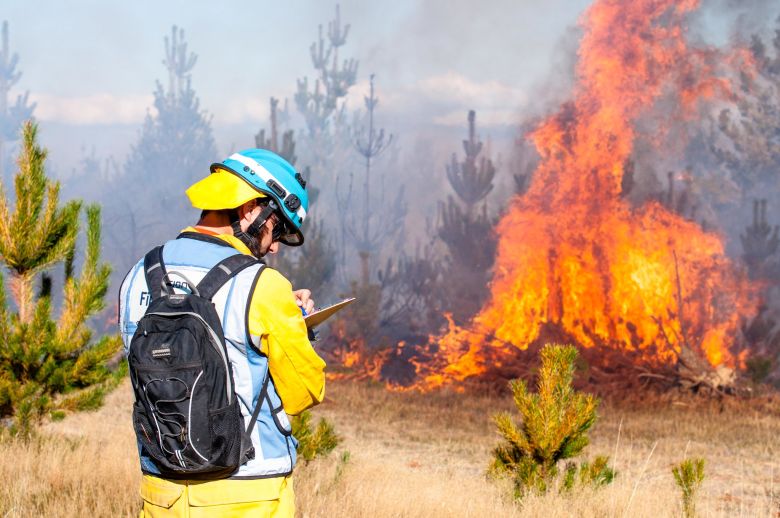World-leading US-NZ research to combat the threat of forest wildfires
15 May 2024 | news

2024 commemorates 150 years of formal scientific partnership between New Zealand and the United States. Throughout the year, Universities New Zealand-Te Pōkai Tara will highlight brilliant examples of the shared scientific research between the two countries.
The following article is courtesy of Science NZ and Scion. Photo credits: Scion/ Veronica Clifford.
Scientists from New Zealand and the US have worked together for many years to better understand the spread of forest fires so they can protect lives and property from this threat in both countries.
In recent years they’ve studied experimental burns in crop stubble, invasive gorse stands, and forest debris using drones, thermal infrared cameras, and wind remote sensing equipment to build a fuller picture of extreme wildfire behaviour.
Wildfires cause about $150 million in damage to Aotearoa New Zealand every year. By 2050 it is predicted to be $550 million annually due to the increasing influence of climate change. New Zealand research on wildfires is known globally for its long history of collaboration, especially with experts from the US.
Recently, scientists from Crown Research Institute Scion, the US Forest Service’s Missoula Fire Services Laboratory, and the US National Centre for Atmospheric Research set fire to wilding pine slash piles near Twizel in the South Island in a study aimed at protecting firefighters and rural communities.
The slash piles were configured to create fire whirls or fire tornadoes which can reach temperatures of 1000oC and are the most intense and damaging part of a forest fire. The first of the burns involved the ignition of five-metre diameter slash piles. Then 10, 20, and 30 metre-diameter piles followed.
The initiative was partly prompted by climate change scenarios which point to warmer temperatures and stronger and more frequent westerly winds. This is expected to result in a sharp increase in the number of extreme fires by the end of this century – possibly even by 2050. The scientists analysed the behaviour of each blaze using multiple slow-motion cameras and a variety of hi-tech sensors. They observed air turbulence causing updrafts and downdrafts that push the flame up and down.
Understanding how all the elements work together will enable more accurate fire spread models that could save lives, homes and natural resources worldwide. The burns enabled the scientists to increase their understanding of how fire moves at different thresholds - atmospheric, environmental, fire intensity, and fuel condition - that must be crossed to generate a ‘fire whirl’. Improving our understanding of extreme fires increases our ability to reduce the threat they pose.
The studies are part of the Scion-led Extreme Wildfire Research Programme which runs until 2026.
